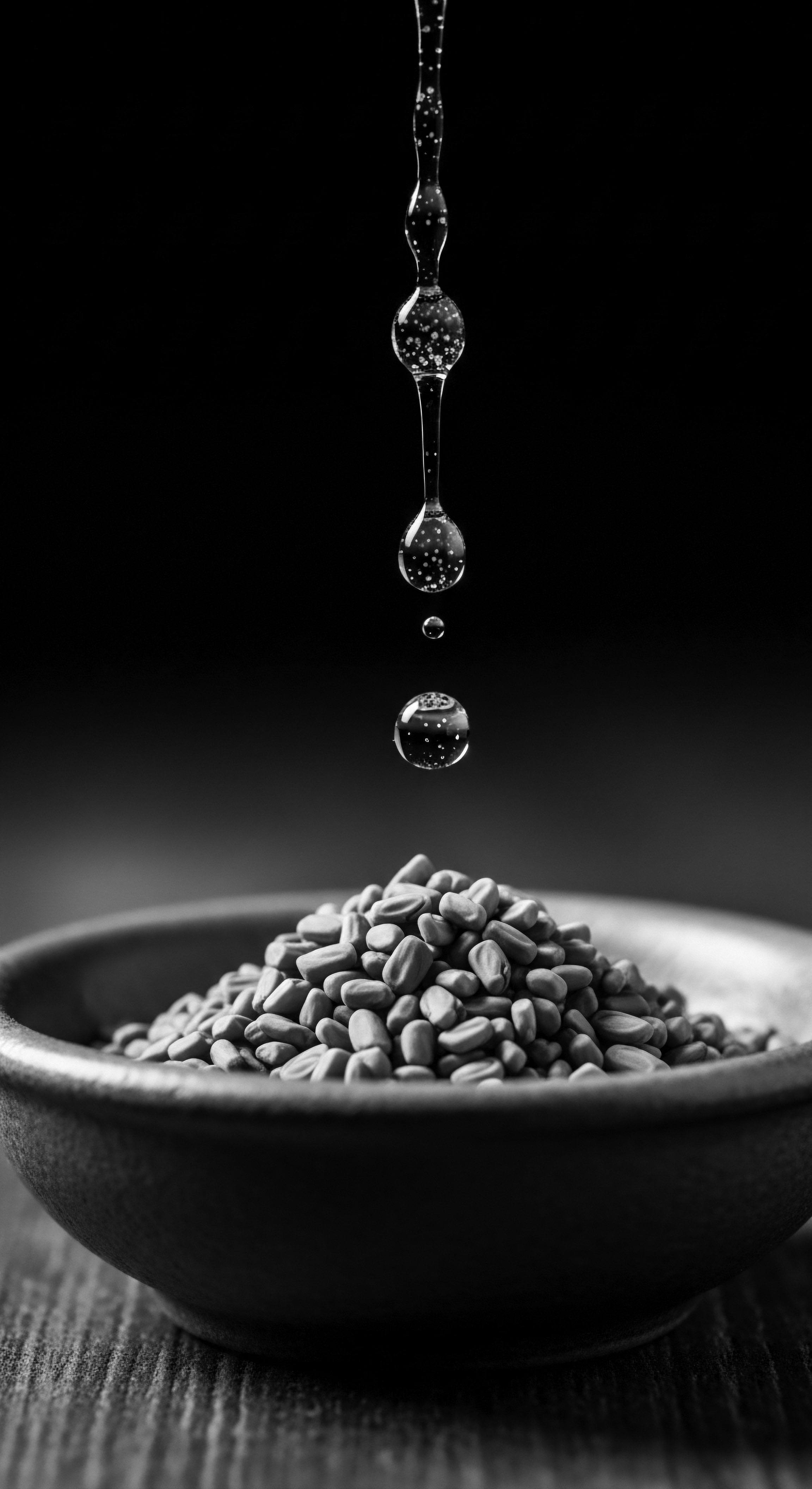
Roots
The story of textured hair, for many with African ancestry, is a chronicle whispered through generations, not simply a biological fact. It speaks of survival, ingenuity, and a profound connection to the earth and spirit. To understand what traditional African hair practices persist today, we must first allow ourselves to descend into the very fiber of the strand, tracing its lineage back to elemental biology and the ancestral lands that first nurtured its vibrant forms. It is in this grounding that the living heritage of hair care reveals itself, a legacy woven into the very structure of our coils and curls.

The Intricacy of Textured Hair from Ancestral Views
Consider the helix, the spiraling staircase of DNA, a blueprint for life itself. For textured hair, this helix manifests in unique ways, shaping strands that defy linearity, instead forming intricate patterns of waves, curls, and coils. From an ancestral perspective, this diverse morphology was not a challenge, but a canvas for artistic expression and a marker of identity.
The earliest communities on the African continent recognized the distinct characteristics of their hair—its density, its spring, its thirst for moisture—and developed practices that honored these inherent qualities. Unlike straight hair, which tends to shed oils more easily down its smooth shaft, textured hair, with its bends and turns, holds onto the scalp’s natural sebum, leading to the need for specific methods of hydration and conditioning.
Modern trichology now validates much of this ancestral understanding. We now speak of follicular eccentricity, the elliptical shape of the hair follicle responsible for the hair’s curvature. We observe the cuticle layers, often more open in highly textured hair, a feature that contributes to its tendency towards dryness. These scientific insights, though articulated in contemporary terms, echo ancient observations concerning moisture retention and the need for emollients derived from the natural world.
The continuity is striking ❉ what was once intuitively understood through observation and communal knowledge is now explained by microscopy and molecular biology. The wisdom wasn’t waiting for a scientific label; it was lived, breathed, and applied.
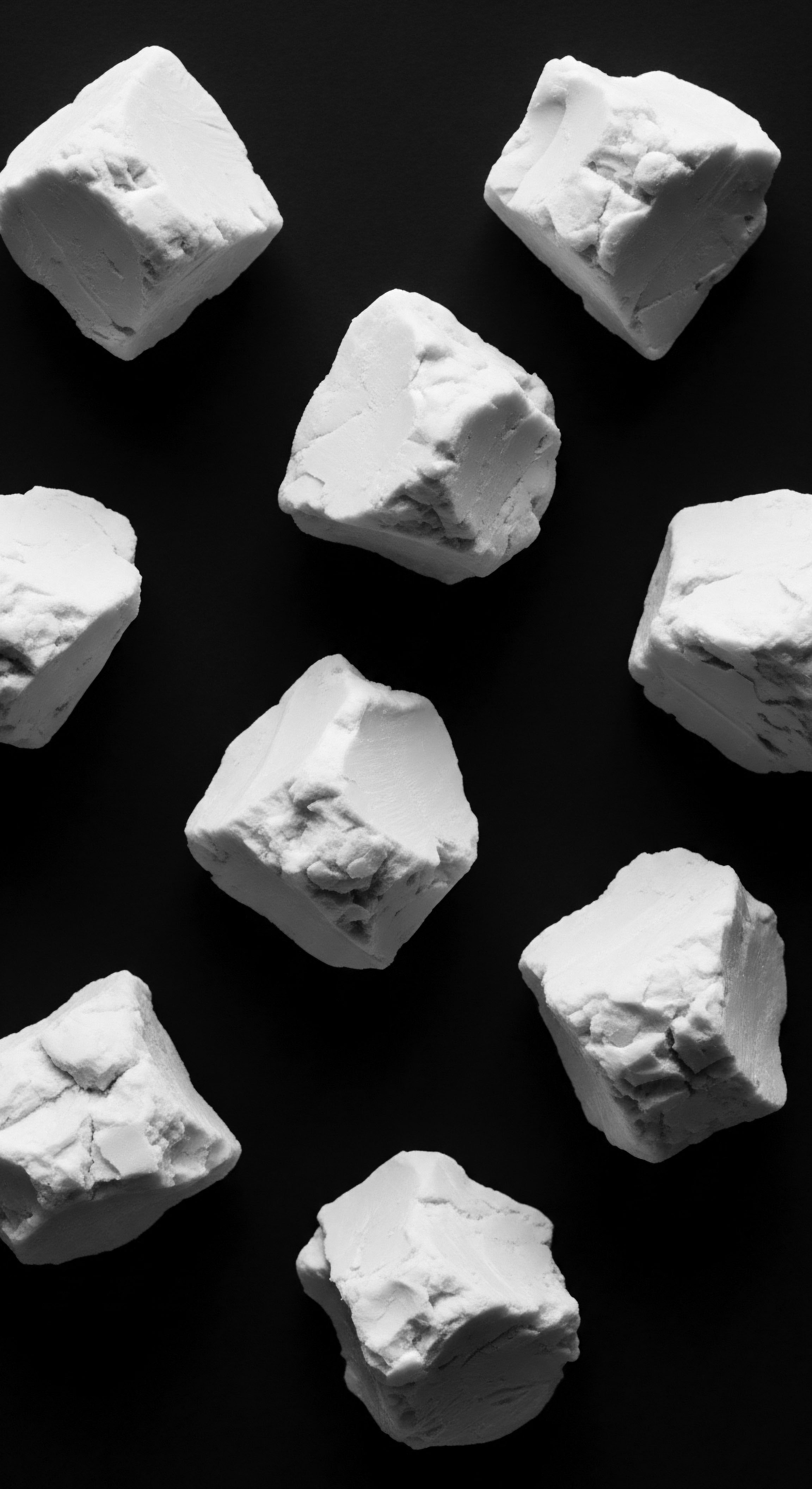
How Does Classification Reflect Cultural Identity?
The language used to describe textured hair today, while often clinical in its modern classification systems (like 3C, 4A, 4B, 4C), often struggles to capture the cultural depth of how hair was categorized in traditional African societies. Historically, hair classifications were not about curl patterns for styling ease but about lineage, marital status, age, or even specific tribal affiliation. A particular braid style, or the way hair was adorned, could signify a woman’s readiness for marriage, a warrior’s triumphs, or a community’s mourning.
The very way hair was styled became a living genealogy, a visual language understood by all within the group. The numbers and letters of contemporary charts, while useful for product selection, cannot convey the sacred geography of a woman’s head, where each twist and plait might tell a story of belonging and tradition.
Traditional African hair practices were not mere aesthetics; they were living narratives, etched onto the scalp and strand, conveying identity, status, and community bonds.
Consider the various terminologies that existed before standardized numerical systems. In West Africa, certain Igbo communities, for instance, used terms describing hair as ‘okpu’ (cap-like, referring to tightly coiled hair) or ‘njiko’ (referring to intertwined styles). These descriptions were holistic, encompassing not just texture but also how the hair was styled and its social function.
This inherent connection between hair and identity is a profound part of its heritage, a connection that persists even as new classification systems emerge. Many today still grapple with these modern systems, often feeling they depersonalize what has always been deeply personal and culturally resonant.
| Traditional Concept Okpu (Igbo) |
| Implied Hair Characteristic Dense, tightly coiled, sculptural hair |
| Modern Parallel High-density 4C hair |
| Traditional Concept Aho (Yoruba) |
| Implied Hair Characteristic Braided style signifying social status |
| Modern Parallel Intricate protective style, often indicative of personal care |
| Traditional Concept Dreadlocks (East Africa/Ancient Egypt) |
| Implied Hair Characteristic Hair allowed to mat and coil naturally |
| Modern Parallel Locs, often associated with spiritual or counter-cultural movements |
| Traditional Concept The continuum of hair description stretches from ancient cultural signifiers to contemporary scientific categorizations, each reflecting different facets of textured hair. |
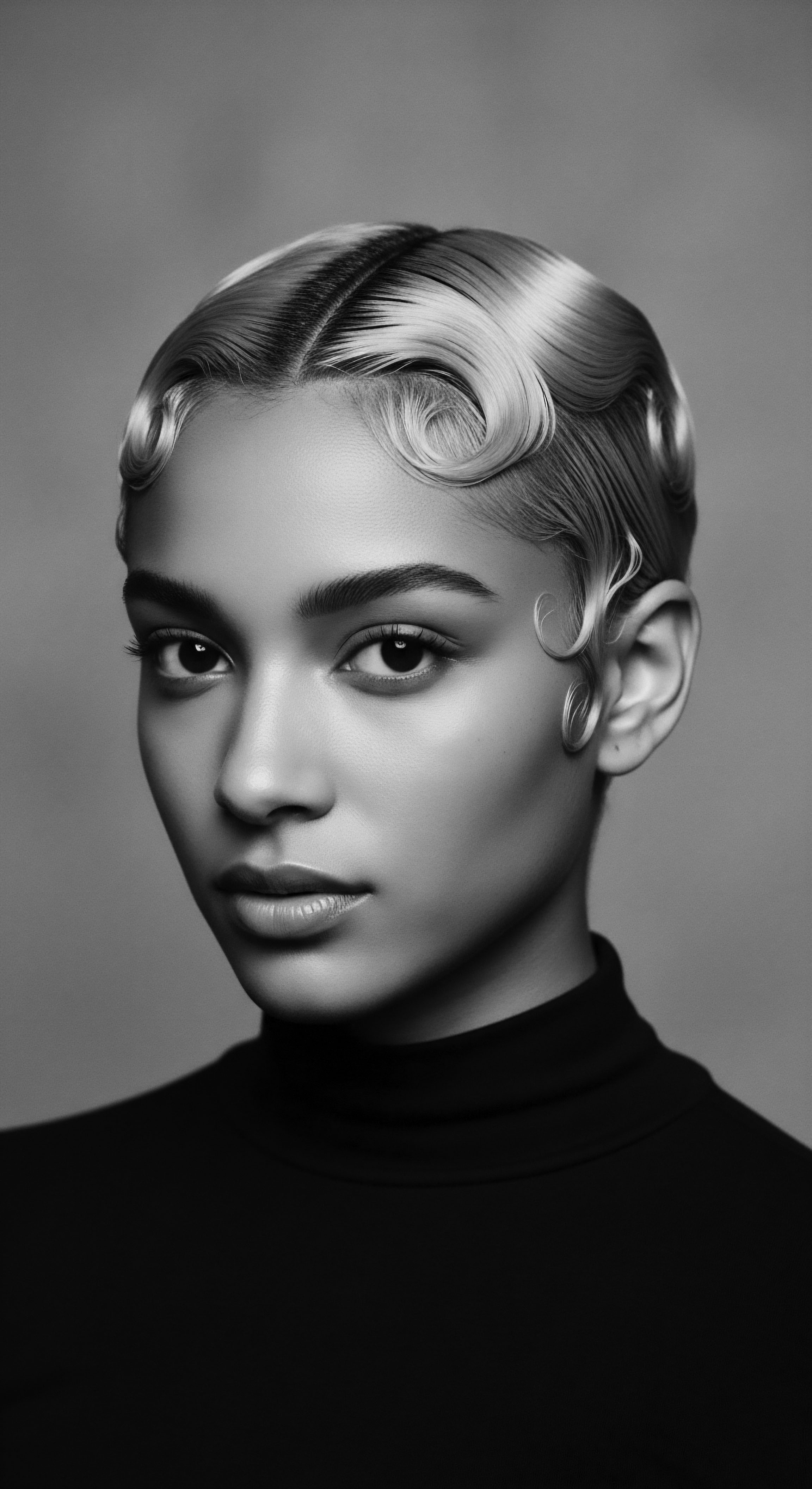
Ritual
The acts of shaping and adorning hair, often perceived as simple grooming, stand as profound rituals within African traditions, a testament to enduring heritage. These are not static museum pieces but living practices, passed down through the gentle brush of fingers, the shared stories in a communal space, and the quiet observation of generations. The hands that plait, twist, and sculpt today carry the muscle memory of countless ancestors, enacting a physical dialogue with history.
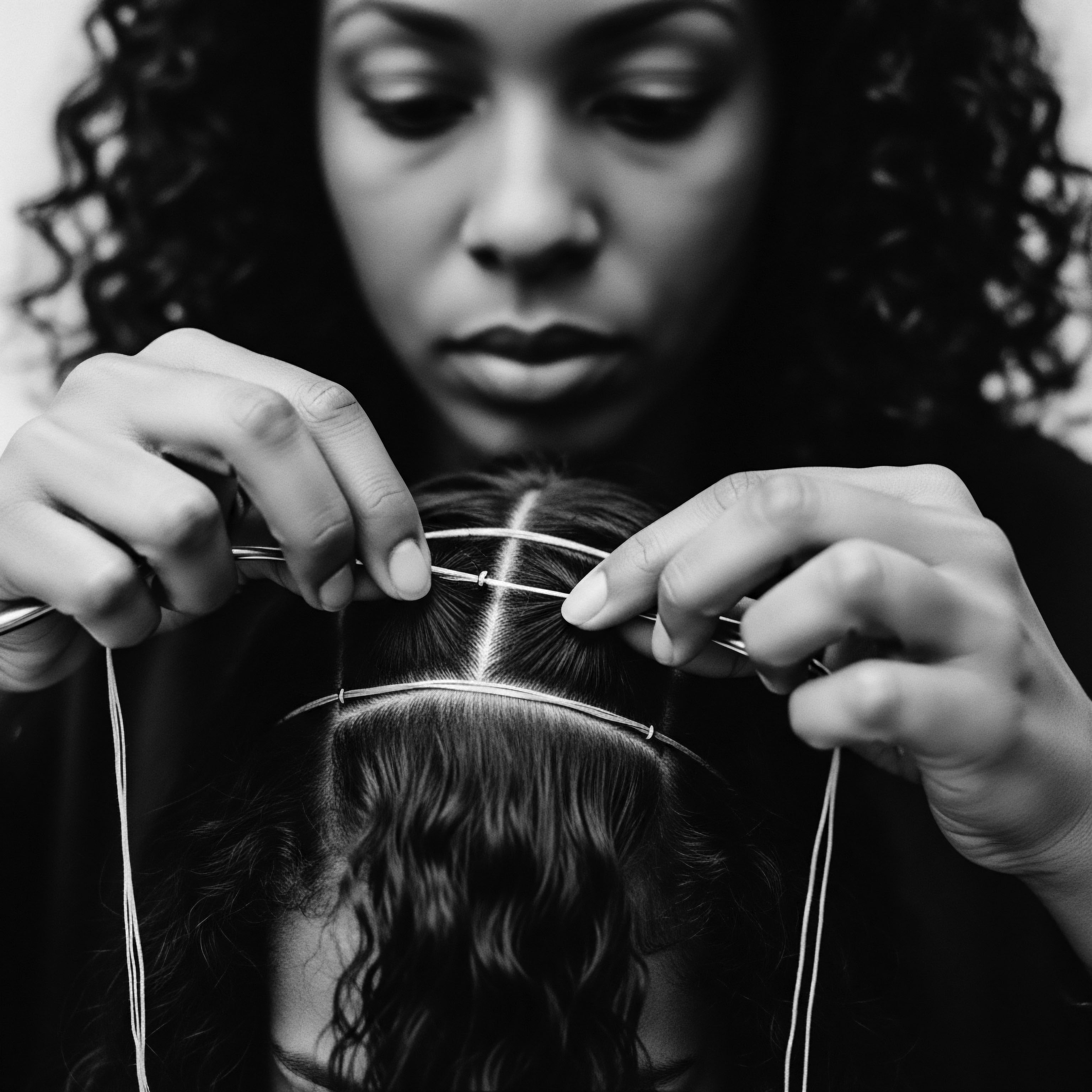
Tracing Ancestral Styling Techniques
Many styling techniques prevalent today find their genesis in the ancient African continent. The foundational approaches of Braiding, Twisting, and Threading, for example, were not merely cosmetic choices. They were sophisticated methods of hair management, offering protection from the elements, promoting growth, and serving as vital expressions of identity.
Archaeological finds in Egypt, Sudan, and West Africa reveal intricate hair art dating back thousands of years, illustrating a highly developed understanding of hair manipulation. These methods often involved sectioning, careful tension, and the strategic use of natural fibers or extensions to achieve desired forms.
- Cornrows ❉ This practice, known in various African languages by different names (e.g. ‘eloko’ in Yoruba, ‘amasununu’ in Zulu), involves braiding hair flat against the scalp in rows. It served to protect hair from sun and dust, and patterns could signify tribal affiliation or social status. Its persistence today, across diverse communities, speaks to its protective efficacy and versatility as a styling foundation.
- Two-Strand Twists ❉ A simpler yet equally effective method where two sections of hair are intertwined. Historically, this technique was used to manage hair before styling, to create a protective base, or as a style in itself. Its modern prevalence stems from its low tension, ease of creation, and ability to keep hair organized and moisturized.
- Hair Threading ❉ Less common in the diaspora today, but still practiced in parts of Africa, involves wrapping thread tightly around sections of hair. This method effectively stretches hair, detangles, and can create elongated, sleek styles without heat. It speaks to a deep knowledge of mechanical manipulation for hair elongation and texture transformation.
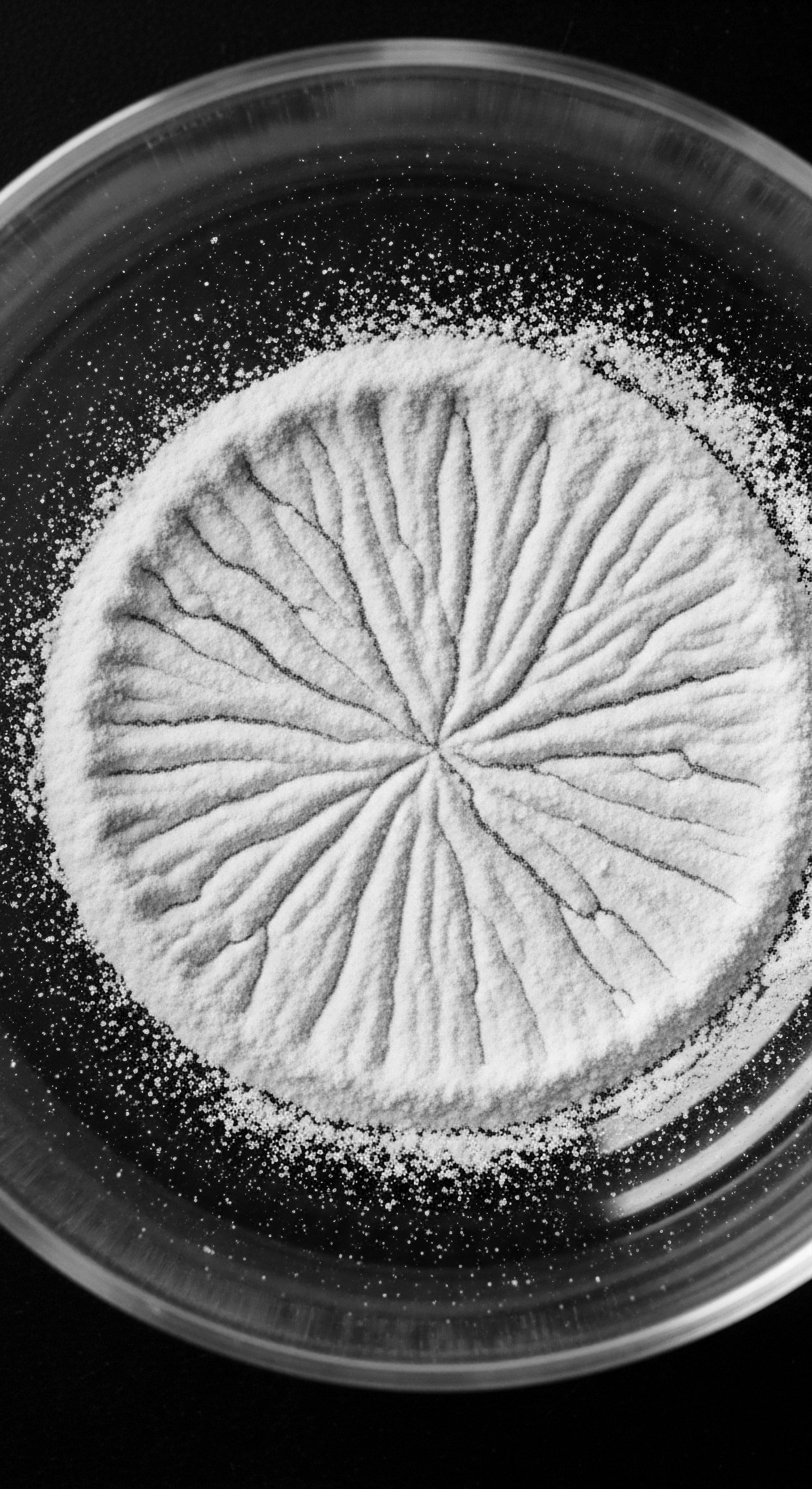
How Have Traditional Tools Shaped Modern Hair Care?
The tools employed in traditional African hair care were simple yet ingenious, often crafted from natural materials and designed with an intimate understanding of textured hair’s needs. Think of carved wooden combs, bone pins, and various natural fibers used for extensions or adornment. These tools were extensions of the hands, designed to gently detangle, part, and sculpt. The ergonomic design of many traditional combs, with their wide teeth and sturdy construction, prefigures the wide-toothed combs and detangling brushes favored for curly hair today, demonstrating a shared understanding of hair’s fragility when wet.
The rhythmic artistry of traditional African hairstyling, from plaiting to twisting, remains a vibrant living heritage, influencing how textured hair is cared for and expressed across the globe.
Even the concept of hair extensions, often seen as a modern invention, has roots stretching back to ancient Africa. Historical accounts and artifacts point to the use of hair from animals, plant fibers, or even donated human hair, woven into existing strands to create elaborate styles or add length and volume. This practice highlights a historical appreciation for versatility and adornment, recognizing hair as a dynamic medium for personal expression and cultural signaling. The modern wig industry and extension market, while globalized, owe a significant portion of their conceptual groundwork to these deeply rooted ancestral practices.
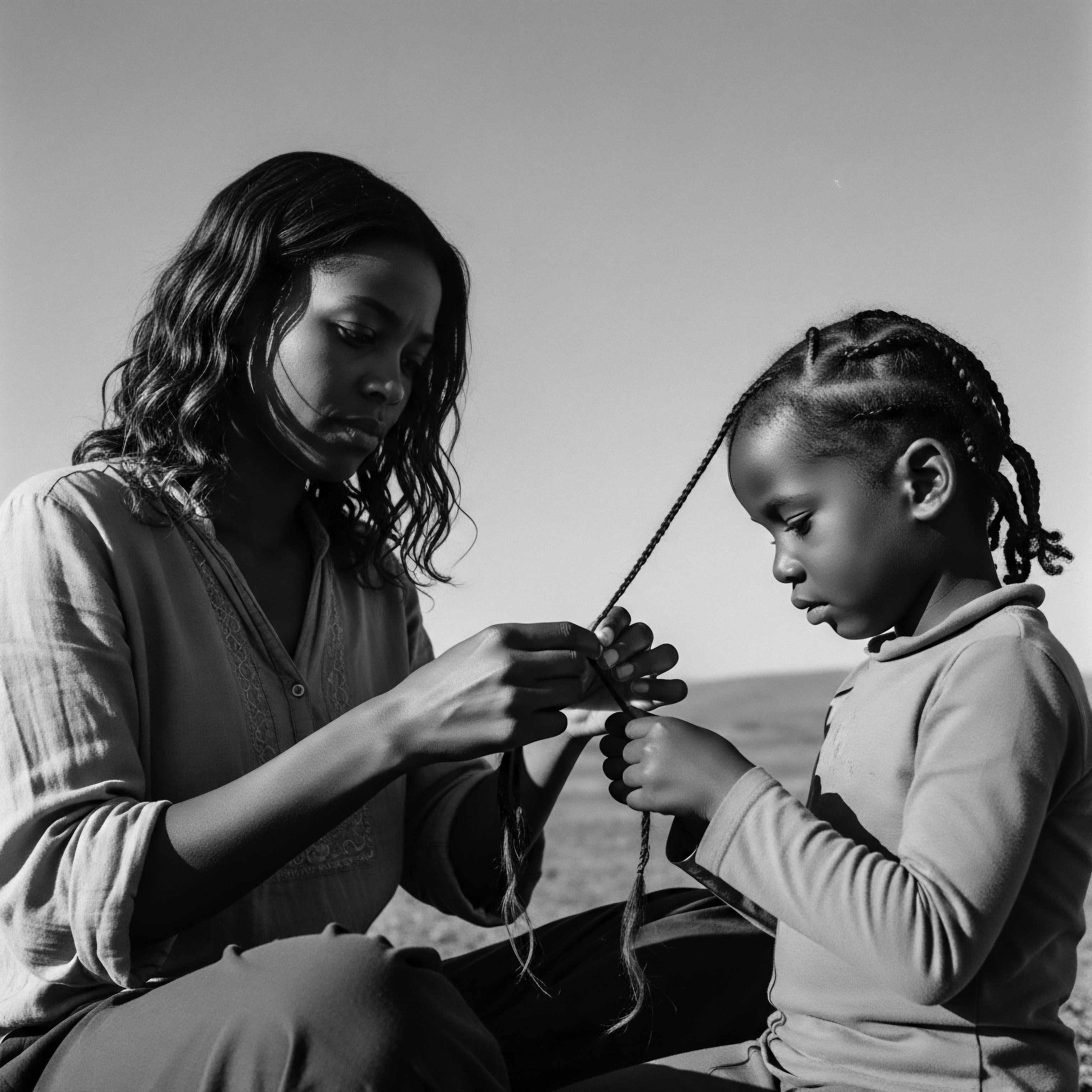
What Role Does Communal Practice Play in Preservation?
The persistence of these practices is not solely due to their practical benefits; it is deeply intertwined with their communal nature. Hair care in many traditional African societies was, and in many places remains, a shared activity. It was a time for storytelling, for imparting wisdom, for strengthening family bonds. Children learned at the knees of their elders, not from instruction manuals, but through observation and participation.
This intergenerational transfer of knowledge, often accompanied by oral histories and songs, ensured the continuity of methods and their underlying cultural significance. The salon chair, for many Black and mixed-race individuals today, functions as a modern iteration of this communal space, a place where stories are exchanged, and a shared heritage is affirmed.
This enduring social aspect is vital. When a mother teaches her daughter to braid, or when friends gather for a styling session, they are not only tending to hair; they are reaffirming cultural ties, sharing personal narratives, and performing acts of care that resonate with ancestral echoes. The act of sharing techniques, product recommendations, and styling tips within textured hair communities today is a direct descendant of these communal practices, a modern manifestation of a timeless tradition.
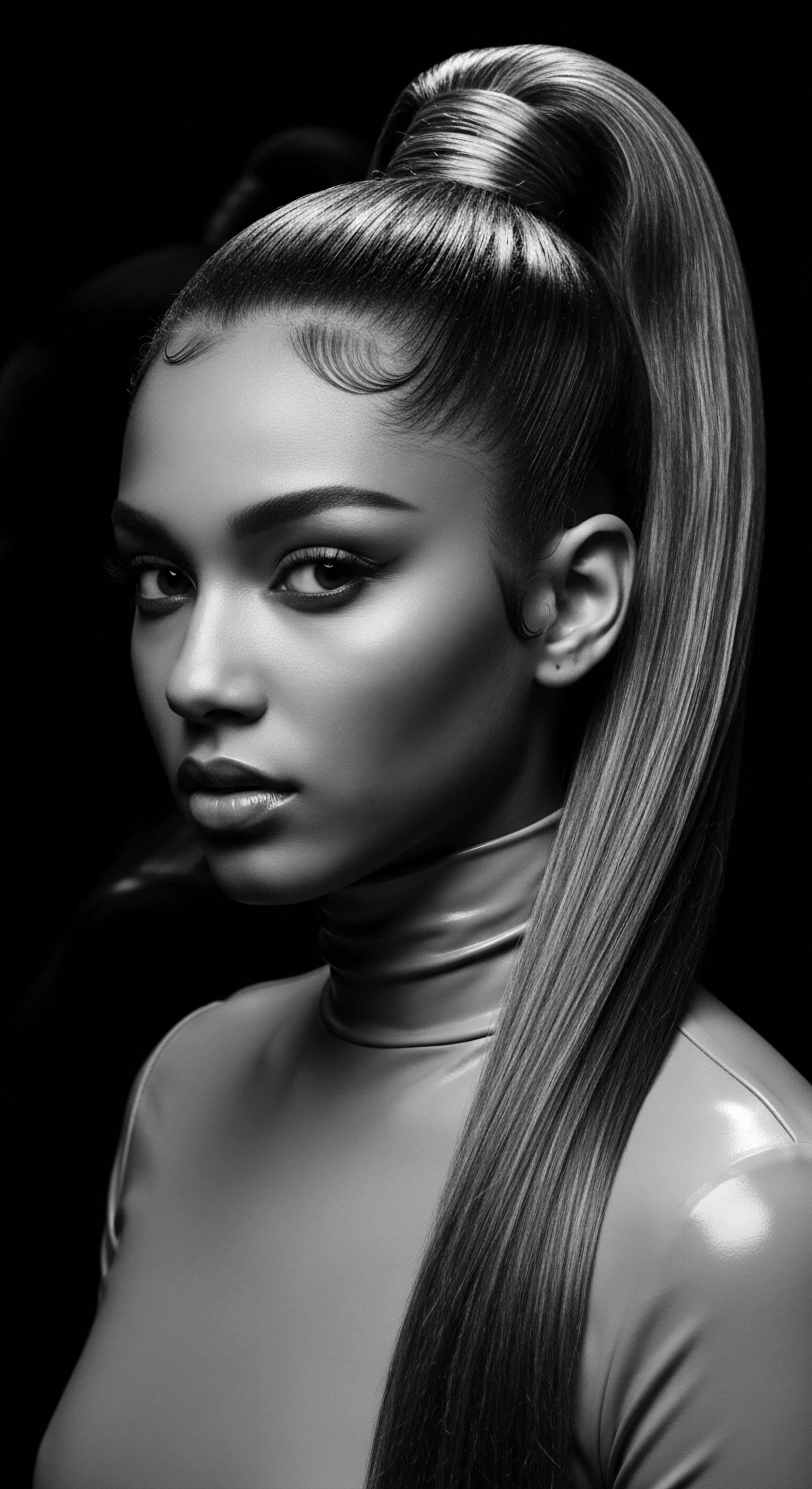
Relay
The care of textured hair, far from being a trend, is a profound relay of wisdom, a living pipeline from ancient earth-centered knowledge to contemporary scientific inquiry. It is here, in the daily rituals of cleansing, moisturizing, and protection, that the enduring brilliance of traditional African hair practices truly shines, offering holistic blueprints for vitality that resonate deeply with heritage. This is not merely about product application; it is about a philosophy of nurturing, passed across centuries.
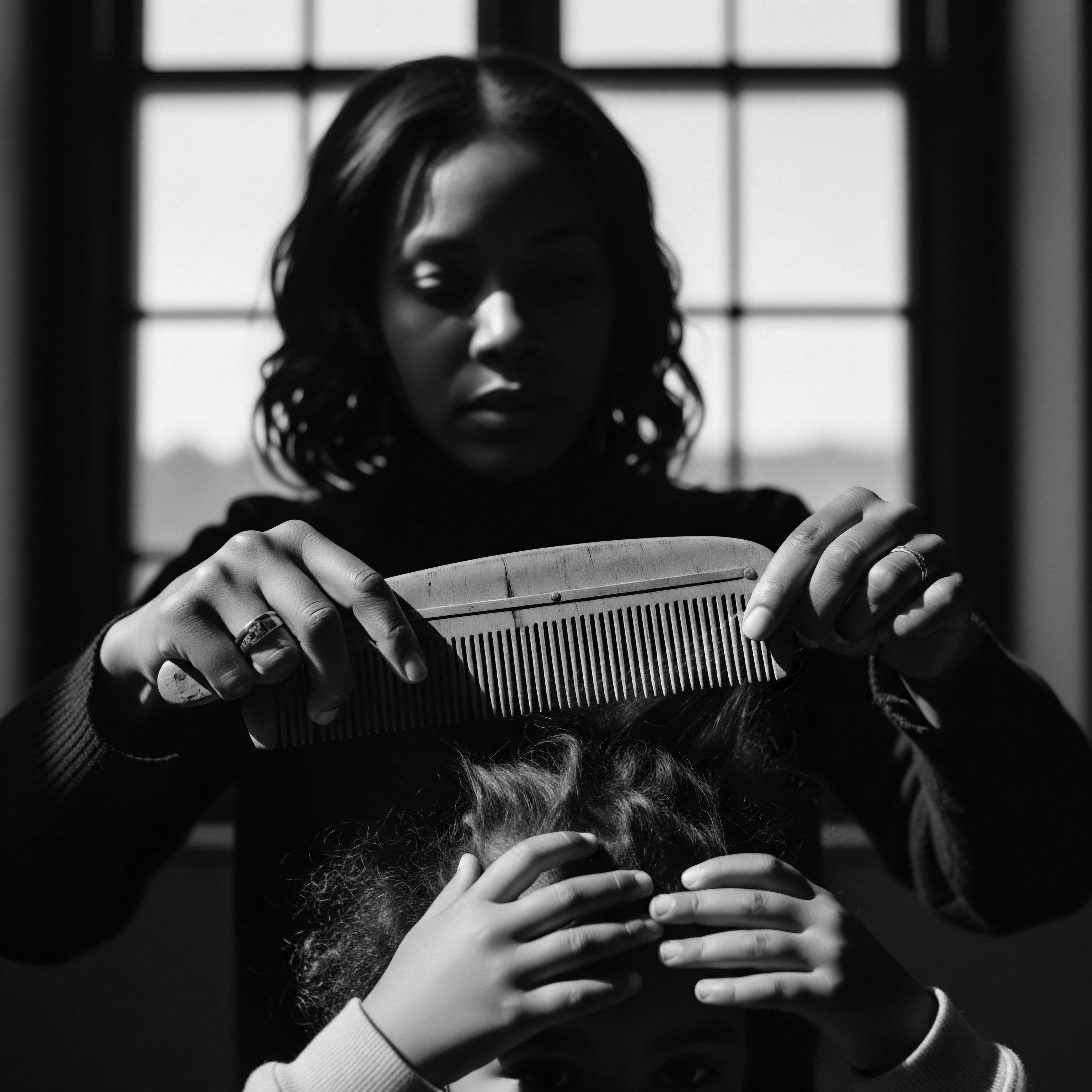
Ancestral Wisdom and Modern Hair Regimens
The concept of a “regimen” for hair care, involving specific steps and products, has a long lineage within African traditions. Before mass-produced conditioners, ancestral communities meticulously crafted their own. These regimens often began with gentle cleansing using natural soaps derived from plants, such as African Black Soap (Alata Samina), which has been used for centuries across West Africa. This soap, made from plantain skins, cocoa pods, and shea tree bark, offers a gentle yet effective cleanse, stripping away impurities without overly drying the hair, much like modern sulfate-free shampoos aim to do.
Following cleansing, hair would be treated with nourishing oils and butters, often applied with warmth to aid absorption. This multi-step approach recognized the delicate balance required to maintain hair health and shine, anticipating the modern emphasis on conditioning and sealing in moisture.
A statistical analysis by Byrd, Adames, and Young (2020) on Black hair care practices in the United States highlights that 70% of Black women use natural oils or butters for moisturizing, a direct continuation of ancestral practices where ingredients like shea butter or coconut oil were paramount for moisture retention and scalp health. This enduring reliance on natural emollients underscores the powerful continuity of wisdom. The understanding that heavy, natural sealants are necessary for textured hair to thrive was a truth known millennia ago and is still upheld by contemporary science.
The enduring wisdom of ancestral African hair care, a blend of intuition and deep knowledge of natural ingredients, finds its modern validation in the thriving textured hair community.
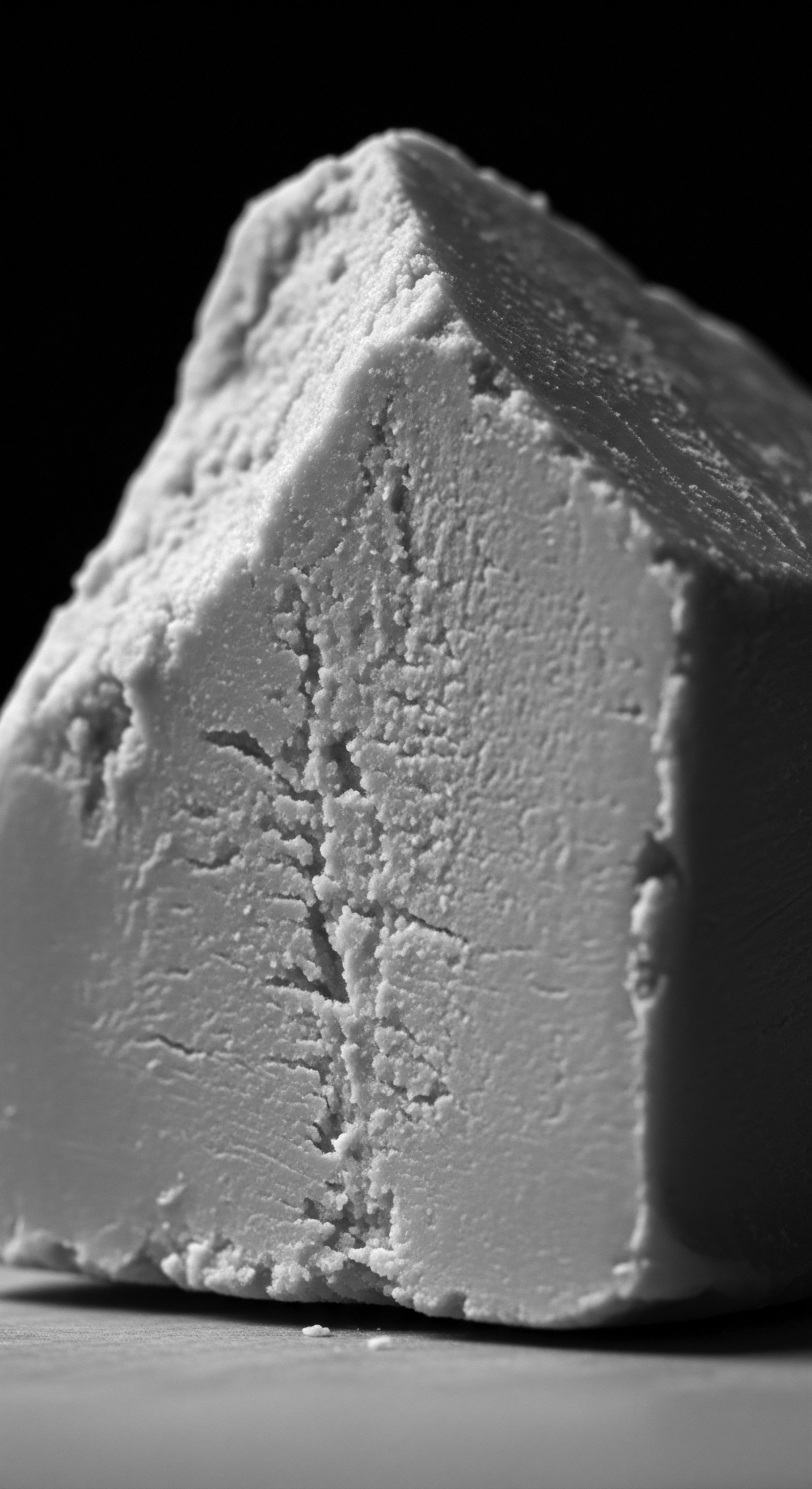
The Nighttime Sanctuary and Head Wraps
The significance of nighttime hair protection is a practice deeply etched into African hair heritage, persisting with remarkable consistency today. Head wraps, bonnets, and protective coverings were not solely for modesty or style; they served a crucial practical purpose ❉ safeguarding hair from friction, dust, and moisture loss during sleep. In many traditional African cultures, a woman’s hair was considered a sacred part of her being, a channel to the spiritual realm, and thus required careful preservation, even during slumber. The deliberate act of wrapping hair before bed was a ritual of protection, ensuring its continued health and appearance.
Today, the use of Satin or Silk Bonnets and scarves is ubiquitous within the textured hair community globally. This is a direct lineage from ancestral practices. The smooth surface of silk or satin minimizes friction, preventing breakage, preserving curl patterns, and retaining moisture—qualities understood intuitively by ancestors who sought to protect their hair from harsh environmental conditions.
The science now affirms that cotton pillowcases, with their absorbent fibers, strip hair of its natural oils, leading to dryness and frizz. The simple, elegant solution of a smooth head covering, developed centuries ago, stands as a testament to the enduring practicality and brilliance of ancestral wisdom.
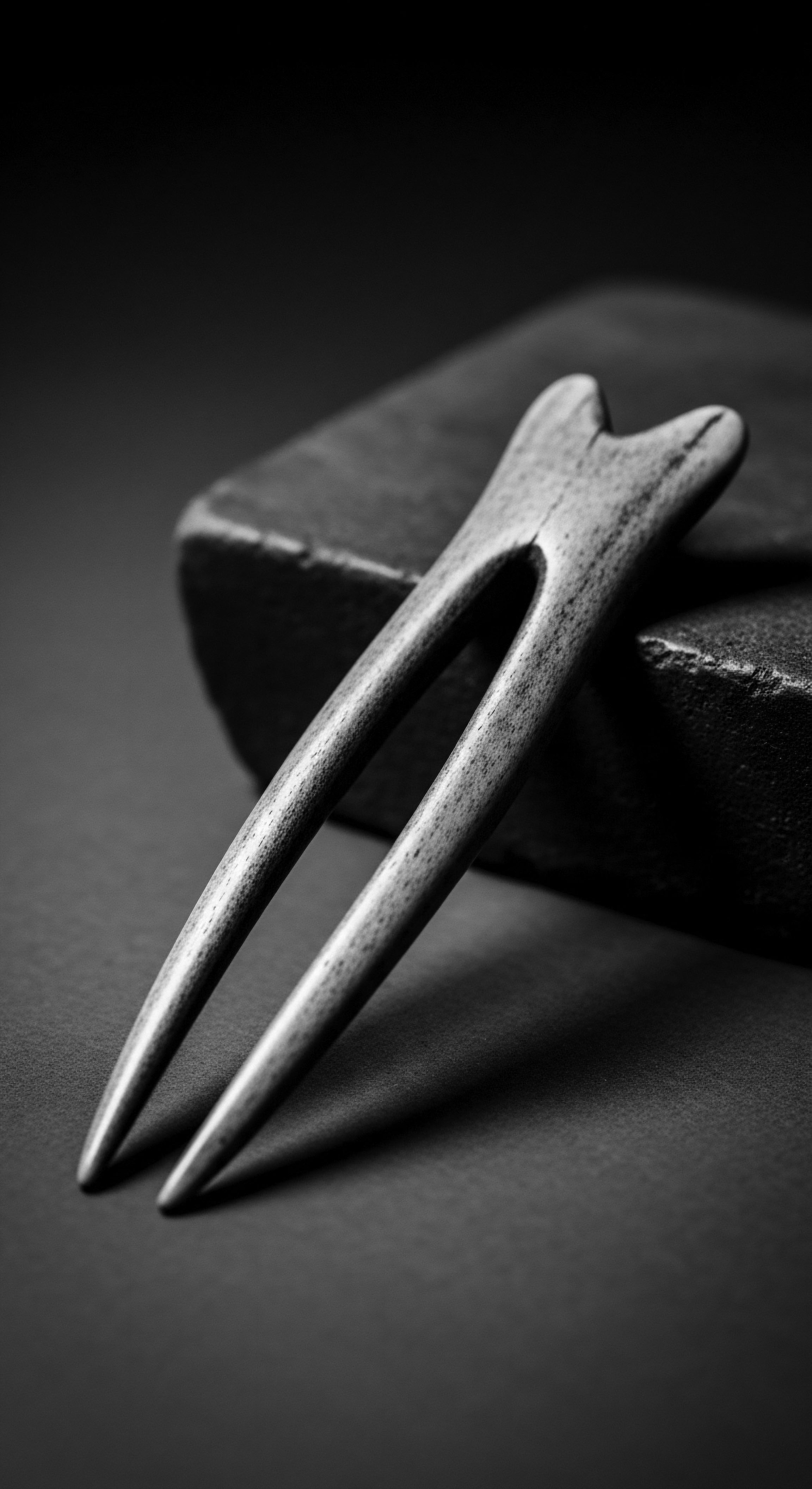
Indigenous Ingredients and Their Continued Relevance
The African continent is a repository of botanical wonders, many of which formed the bedrock of traditional hair care. Ingredients like Shea Butter (from the shea tree), Argan Oil (from Morocco), Baobab Oil, and Chebe Powder (from Chad) were, and remain, central to nurturing textured hair. Each possessed unique properties recognized and utilized by various communities:
- Shea Butter ❉ A rich emollient, historically used to moisturize hair and scalp, seal in moisture, and protect strands from environmental damage. Its high concentration of vitamins A, E, and F, and fatty acids, makes it a powerful conditioner, a truth known for centuries before cosmetic chemists analyzed its composition.
- Chebe Powder ❉ Derived from the Chebe plant, this powder, traditionally mixed with oils and applied to hair, is known for strengthening hair, reducing breakage, and promoting length retention in certain Chadian communities. Its efficacy lies in its ability to fortify the hair shaft, preventing mechanical damage.
- Aloe Vera ❉ While globally prevalent, various species of aloe were used across Africa for their soothing, moisturizing, and cleansing properties on both scalp and hair.
The persistence of these ingredients in modern formulations and in their raw form speaks to their undeniable efficacy. Contemporary product development often seeks to isolate and synthesize the compounds responsible for these benefits, yet the holistic wisdom of combining these natural elements, as practiced by ancestors, often yields results that are equally, if not more, beneficial. The market for natural and organic hair products today is directly fueled by a renewed appreciation for these ancestral ingredients, completing a cycle of knowledge that began millennia ago.
| Traditional Ingredient Shea Butter |
| Ancestral Use Moisturizer, sealant, protective balm |
| Modern Formulation Function Emollient, conditioner, occlusive agent |
| Traditional Ingredient African Black Soap |
| Ancestral Use Gentle cleanser for hair and body |
| Modern Formulation Function Sulfate-free cleansing agent, detoxifier |
| Traditional Ingredient Chebe Powder |
| Ancestral Use Hair strengthening, length retention |
| Modern Formulation Function Hair fortifier, breakage reduction (often in DIY treatments) |
| Traditional Ingredient Aloe Vera |
| Ancestral Use Soothing, moisturizing, scalp health |
| Modern Formulation Function Humectant, anti-inflammatory, scalp conditioner |
| Traditional Ingredient The enduring utility of these natural gifts bridges ancient practices with contemporary hair science, affirming their timeless benefits. |
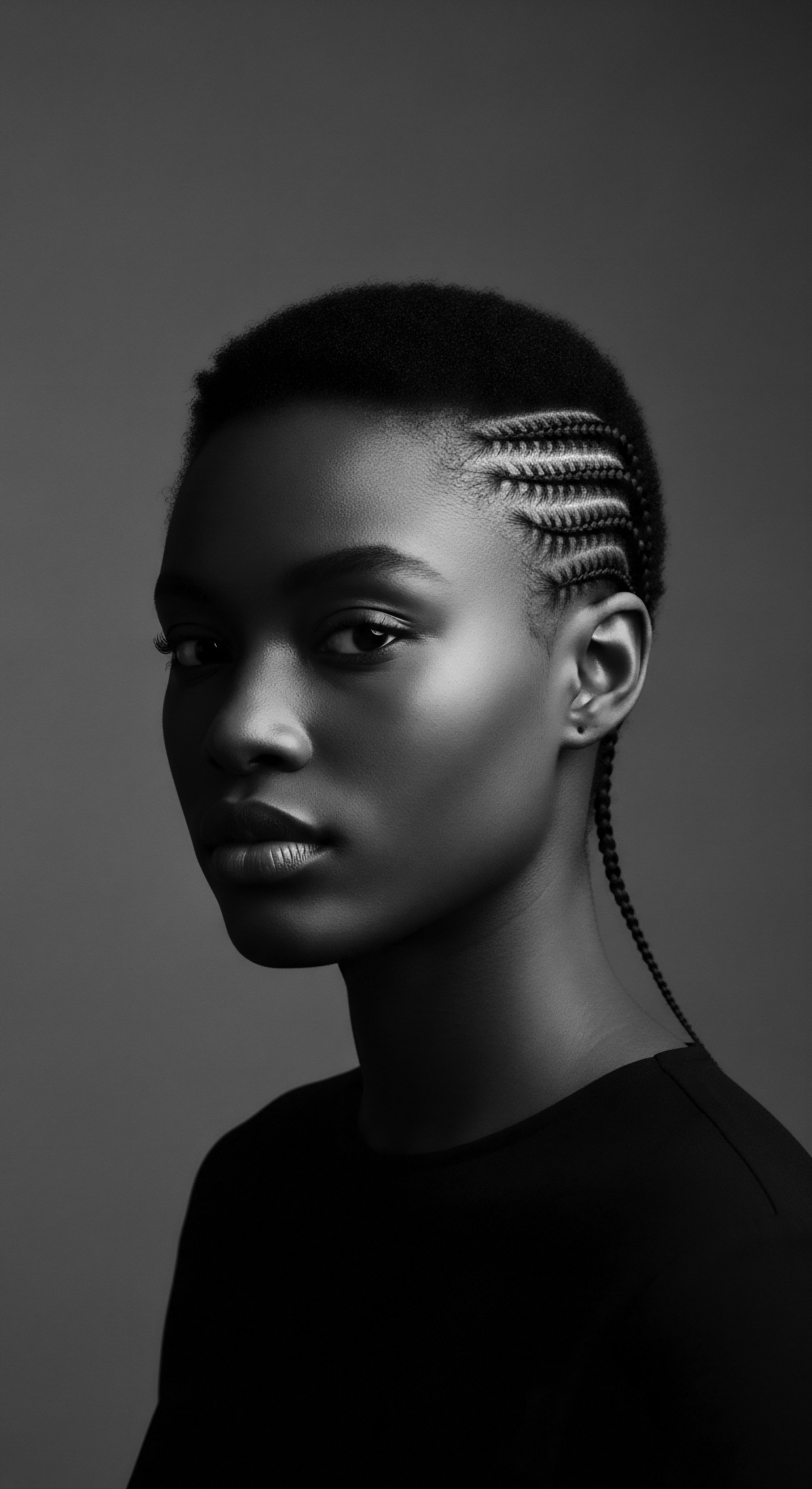
Reflection
The enduring presence of traditional African hair practices today is a vibrant testament to heritage, a living, breathing archive of ancestral ingenuity and resilience. These are not relics of a distant past but dynamic, evolving currents in the vast ocean of textured hair care. Each braid, every application of natural butter, and the quiet act of covering one’s hair at night, carries an echo from the source, a tender thread connecting us to the wisdom of those who came before. This profound interaction with our strands allows us to honor a legacy that transcends time, reminding us that the journey of textured hair is, at its very core, a journey of identity, spirit, and an unbound helix continuously shaping futures.

References
- Byrd, W. T. Adames, H. Y. & Young, J. D. (2020). Hair Story ❉ Untangling the Roots of Black Hair in America. New York University Press.
- Banks, I. (2000). Hair Matters ❉ Beauty, Power, and Black Women’s Consciousness. New York University Press.
- Grier, P. (2009). African American Hairstyles ❉ An Illustrated Cultural History. University of California Press.
- Okoro, N. (2019). African Traditional Hair Styling ❉ The Ancient Art and Its Modern Expression. Journal of Cultural Studies, 12(3), 187-205.
- Opare, K. (2015). The Science of Black Hair ❉ A Comprehensive Guide to Textured Hair Care. Independently Published.
